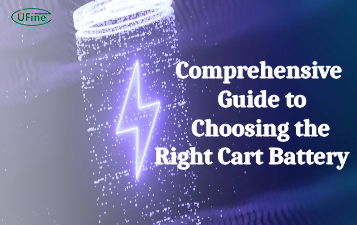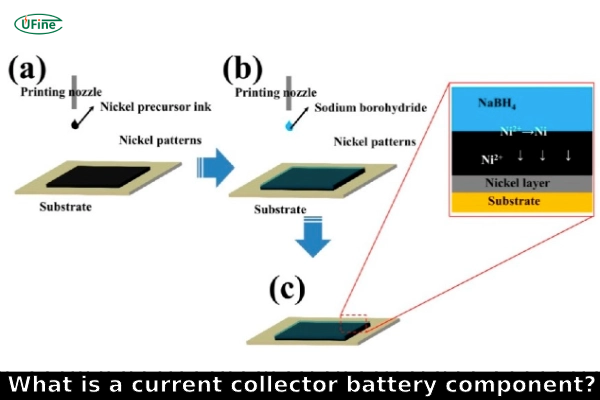Have you ever wondered what keeps your batteries ticking? It’s the current collector battery component! In this exploration, we’ll uncover its secrets, from its basic definition to its impact on battery performance. Join us as we delve into the world of current collector battery components and their crucial role in powering our devices.
Part 1. What is a current collector battery component?
A current collector battery component is a fundamental part of lithium-ion batteries, designed to facilitate the smooth flow of electrons during the charging and discharging processes.
Function:
- Conductivity: They carry electricity, connecting the battery’s materials to the circuit and ensuring energy flow.
- Support: They hold the battery’s parts, keeping them strong and safe from damage.
- Heat Control: Components release heat, keeping the battery safe during use.
- Electrode Link: They connect the materials to outside contacts, moving electrons efficiently.
Importance in Lithium-ion Batteries:
- Efficiency Boost: They help electrons move smoothly, improving battery efficiency and performance.
- Longer Lifespan: Their robust design prevents battery parts from wearing out quickly.
- Safety Guarantee: Well-designed collectors keep batteries safe from accidents like short circuits.
- Better Performance: Choosing suitable materials improves battery power, speed, and how long it lasts.
Part 2. Types of current collector battery materials
Lithium-ion batteries employ various materials as current collectors to facilitate efficient electron flow. Let’s explore the most common types:
1. Copper:
- Conductivity: Copper is highly conductive, allowing for efficient electron transfer within the battery.
- Availability: It is readily available and cost-effective, making it a popular choice for current collector applications.
- Durability: Copper exhibits good mechanical strength, providing structural support to the battery electrodes.
- Usage: Manufacturers commonly use copper as a current collector for both the anode and cathode in lithium-ion batteries.
2. Aluminum:
- Lightweight: Aluminum is lightweight, contributing to the overall weight reduction of the battery system.
- Corrosion Resistance: It offers excellent corrosion resistance, ensuring long-term stability in various battery environments.
- Affordability: Aluminum is inexpensive, making it an economical choice for current collector materials.
- Usage: Aluminum is primarily utilized as a current collector for the cathode in lithium-ion batteries.
3. Nickel:
- High-Temperature Stability: Nickel exhibits high-temperature stability, making it suitable for batteries operating batteries operating under extreme conditions.
- Low Resistivity: It has low resistivity, minimizing energy loss during electron transfer.
- Compatibility: Nickel is compatible with various battery chemistries, enhancing its versatility in application.
- Usage: Nickel is commonly employed as a current collector for the cathode in lithium-ion batteries.
4. Graphite:
- Conductivity: Graphite possesses moderate conductivity, allowing for efficient electron flow while offering lightweight properties.
- Flexibility: Its flexibility enables the fabrication of thin and flexible current collector films, which are ideal for specific battery designs.
- Corrosion Resistance: Graphite exhibits good corrosion resistance, ensuring long-term stability in battery systems.
- Usage: Manufacturers typically use graphite as a current collector for the anode in lithium-ion batteries.
5. Carbon Nanotubes:
- High Conductivity: Carbon nanotubes offer exceptionally high conductivity, facilitating rapid electron transfer within the battery.
- Strength and Flexibility: They combine strength and flexibility, providing structural support and the ability to conform to various battery designs.
- Enhanced Performance: Carbon nanotubes can enhance battery performance by reducing internal resistance and improving efficiency.
- Usage: Manufacturers often employ carbon nanotubes as current collectors for both the anode and cathode in lithium-ion batteries, particularly in advanced or specialized applications.
Part 3. How do current collector battery components affect performance?
Current collector battery components play a critical role in determining the performance and efficiency of lithium-ion batteries. Here’s how:
1. Conductivity:
- Quick Electron Movement: Good-conducting materials help electrons move fast between battery parts, improving energy use and lowering resistance inside.
- Quicker Charging: Better conductivity means batteries can charge faster, so devices can get power fast.
- More Power: Quick electron flow makes more energy, giving enough power for demanding jobs.
2. Structural Support:
- Battery Part Strength: Strong current collector materials hold up battery parts well, keeping them from changing shape and staying in the right place when the battery charges and uses energy.
- Battery Lasts Longer: Tough current collectors make batteries last longer and more robust by lowering the stress on battery parts.
3. Heat Dissipation:
- Stopping Overheating: Good heat control by current collector parts keeps batteries at the right temperature so they don’t get too hot and stay safe.
- Always Works Well: Batteries always work the same when they stay at the right temperature, even when things are hard.
4. Electrode Interface:
- Less Energy Lost: Good connections between battery parts stop energy from wasting when electrons move, making batteries work better. Faster Charging: Better connections make batteries charge faster, so users don’t have to wait as long to use their devices.
- Stronger Connections: Good connections between battery parts make electrons move steadily, so batteries last a long time without breaking down.
Part 4. Innovations in current collector battery technology
Researchers and engineers have significantly advanced in developing collector battery technology in recent years, paving the way for improved battery performance and efficiency. Let’s explore some of the latest innovations:
1. Nanostructured Materials:
- Better Conductivity: Tiny current collector materials like nanowires conduct electricity well, helping electrons move fast in batteries.
- More Surface Area: Nanostructured materials have a lot of surface area, so they interact more with battery parts, making them work better.
- Flexibility: These materials can bend and are light, so we can use them to make batteries that bend or go on clothes.
2. Graphene-Based Current Collectors:
- Excellent Conductivity: Graphene has outstanding electrical conductivity, making it useful as a collector material. It helps electrons move efficiently and lowers resistance inside batteries.
- Firm Structure: Graphene collectors are rigid and flexible, keeping batteries stable during use.
- Better Battery Performance: Using graphene collectors can make batteries hold more energy, give out more power, and last longer.
3. 3D Printing Technology:
- Customized Production: 3D printing can make current collectors with specific shapes and structures, improving electron flow and saving battery energy.
- Intricate Designs: 3D printing can create complex collector patterns, like networks or holes, boosting battery performance.
- Quick Prototyping: 3D printing helps us make collector samples fast, speeding up battery development and making it easier to improve.
4. Carbon Nanotube Networks:
- Good Conductivity: Carbon nanotube networks conduct electricity well, making electron transport efficient and reducing energy loss.
- Flexibility: These networks are very flexible and can easily fit onto different battery parts, ensuring good contact and electron transfer.
- Stability Boost: Their strength makes current collectors stable, preventing battery parts from coming apart or breaking during use.
Part 5. Conclusion
Current collector battery components are essential for lithium-ion batteries, impacting their performance significantly. With ongoing innovations in current collector technology, the future of energy storage is promising, offering improved efficiency and reliability for various applications.
Related Tags:
More Articles

Comprehensive Guide to Choosing the Right Cart Battery
Choosing the right cart battery ensures optimal performance and longevity. This guide covers cart battery types and helps you make an informed choice.
The Ultimate Guide to 18650 Button Top Battery
18650 button top batteries are popular for their high energy density and reliability. This guide covers their key features, usage, and maintenance tips.
The Power of Slim: Unveiling the Potential of Flat Lithium Ion Battery
Flat lithium-ion batteries power devices from phones to vehicles. This article explores their design, benefits, types, applications, charging, and safety.
The Comprehensive Guide to Battery Balancing and Battery Balancer
Battery balancing and balancers optimize performance, longevity, and safety. This guide covers techniques and tips for choosing the right balancer.
10 Key Facts About Drone Battery for 2024
Uncover crucial insights with "10 Key Facts About Drone Battery for 2024." Learn the latest trends and essential details on drone batteries.




